Harsh reality for rugby
By Ashley Hammond
Special to Gulf News
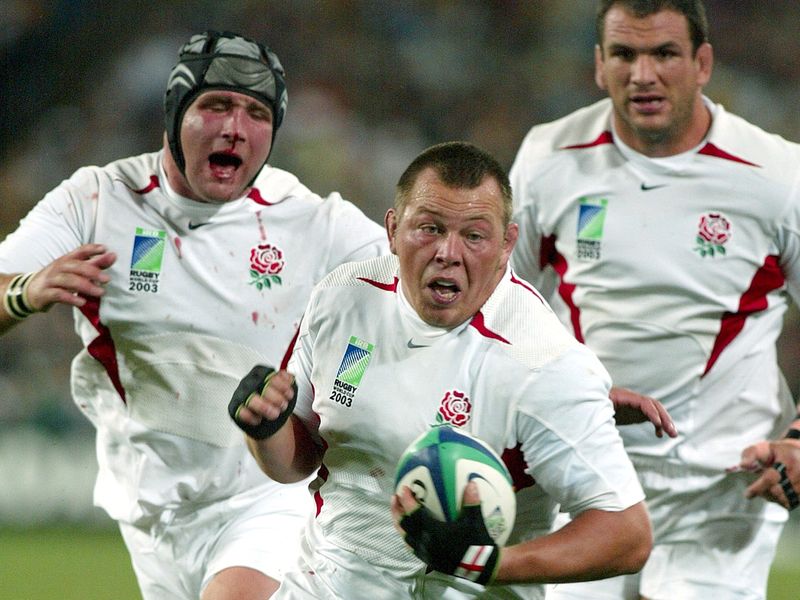
Image Credit: Reuters
News that former England hooker and one-time Dubai resident Steve Thompson can’t remember winning the 2003 Rugby World Cup due to the early onset of dementia, has shocked the world of sport this month.
The 42-year-old is one of 14 former players launching a landmark legal case against the game’s authorities for negligence after they allegedly failed to protect these players from later-life brain damage caused by persistent head injuries during a brutal career packed full of bone-crunching tackles.
Thompson reported being treated like a ‘piece of meat’, forced to play on through injury for risk of being dropped, adding that if he could go back, he wouldn’t play rugby, and certainly doesn’t want his kids to do so.
All this spells curtains for the game at grassroots level with parents inevitably choosing to hold back from sending their loved ones onto the field. But does it have to be so? Other sports have weathered their own crises — admittedly at great cost — and experts say it’s about managing that risk. So, what could rugby learn?
The precedent
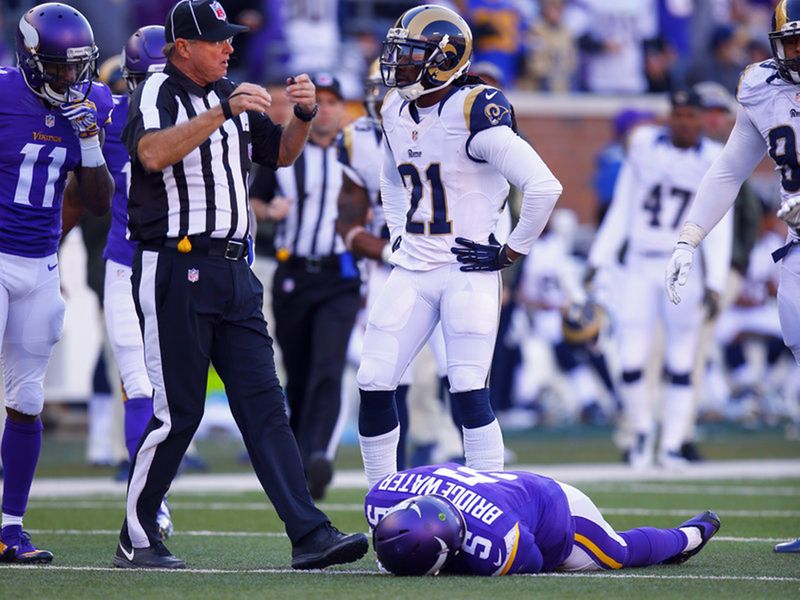
Image Credit: AP
In 2011, seven NFL players launched a federal lawsuit that claimed the league knew about the risk of repetitive traumatic brain injuries but ignored and concealed information from those who participated in the sport.
Players who had sustained repetitive brain injuries during their careers reported symptoms of early onset Alzheimer’s, dementia, depression, deficits in cognitive functioning, reduced processing speed, attention and reasoning, loss of memory, sleeplessness, mood swings and personality changes.
This now has a name: Chronic Traumatic Encephalopathy (CTE), and in brains examined under autopsy from the alarmingly high number of NFL players who committed suicide and died early, it can even be seen in a build-up of white matter tau protein clumps or inflammation that kill brain cells, prompting decay and shrinkage, leaving young players with the brains of 80-year-old dementia and Alzheimer sufferers.
This degenerative disease had been known as dementia pugilistica or punch-drunk syndrome since the 1920s and was first seen in boxers who went on to develop Parkinson’s disease.
According to a 2017 study, 99 per cent of deceased NFL players had various stages of CTE tau protein evident in their brain matter. And it has been found that repetitive concussions increase the risk of this condition.
Thousands of NFL players have since filed lawsuits against the league and the league has paid out nearly a billion dollars in settlements. If you want to know more about this watch the 2015 movie ‘Concussion’ starring Will Smith.
What is concussion?
Concussion is a temporary brain injury caused by a bump, blow or jolt to the head. Signs usually appear within a few minutes or within hours of a head injury and symptoms include a persistent headache, dizziness, nausea, memory loss, loss of balance, mood swings, double vision, confusion, being knocked out or struggling to stay awake. Symptoms will subside, but it is important not to then suffer another knock to the head as repeated concussions over a long period of time have been linked to tau protein build-up leading to CTE.
Tests in mice
In an experiment by neuroscience assistant professor Mark Burns at Georgetown University Medical Centre in Washington in 2016, it was found that if mice were given only a day to recover from a mild concussion, damage accumulated gradually, and neural impairment could still be seen a year later. However, if the brain was given appropriate rest, it totally recovered.
Half of Burns’ mice received a head injury every day for 30 days while the other half received one head injury a week for 30 weeks. After the initial impact, mice lost 10-15 per cent of neuronal connections but there was no cell death or inflammation. Within three days connections were restored.
However, among mice that received a mild concussion every day, the brain did not get the opportunity to heal. Damage to white matter vital for coordinating brain-wide communication became progressively worse over a two-month period and even a year after the last concussion.
“The findings mirror what has been observed about such damage in humans years after a brain injury, especially among athletes,” said Burns.
“Studies have shown that almost all people with single concussions spontaneously recover, but athletes who play contact sports are much more susceptible to lasting brain damage.”
Ducking out of that header
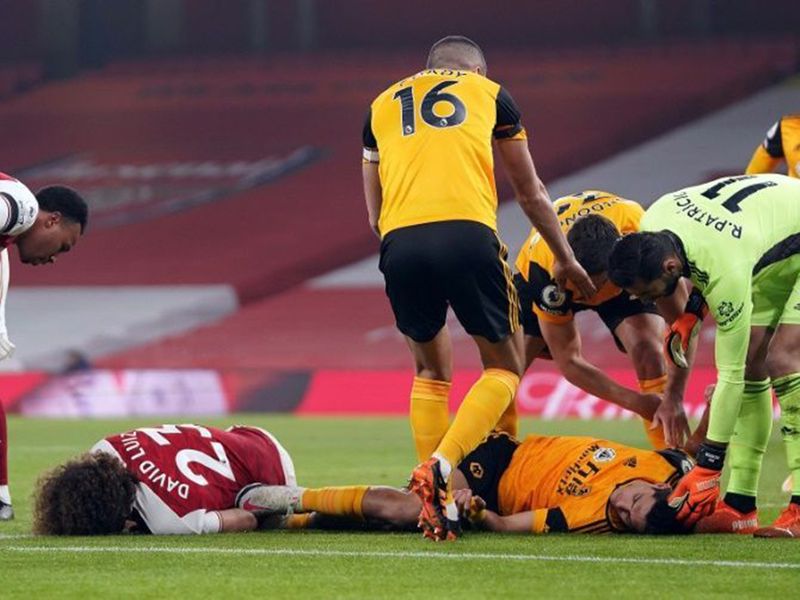
Image Credit: AFP
Aside from the NFL, football has also been under the scanner of late with the deaths this year of former England 1966 World Cup winning players Nobby Stiles and Jack Charlton through Alzheimer’s, and the dementia diagnosis of Jack’s brother Sir Bobby Charlton.
A study by the University of Glasgow in 2019 found that professional footballers were three times more likely to die of neurodegenerative diseases than the rest of the population. And although the report couldn’t state why, one theory is the long-term effect of what heading the ball could have on a player’s brain.
In 2016, the Jeff Astle Foundation, set up in memory of the former West Bromwich Albion player who died of Alzheimer’s, found that at least 300 players were found to have the disease. Children under the age of 12 in England, Scotland and Northern Ireland have now been banned from heading footballs in training or practice sessions for fear of the long-term effects of recurrent brain injuries.
In light of what happened in the NFL, lobby groups are now warning football and rugby authorities to take head injuries more seriously or risk paying out millions in damages for failing to take a duty of care for their players.
The use of concussion substitutes will be implemented in the English Premier League and FA Cup in the very near future after trials were approved by football’s legislators. Arsenal came in for criticism recently when David Luiz was not substituted after a clash of heads with Wolverhampton’s Raul Jimenez.
The International Football Association Board (Ifab) said: ‘We have approved extensive trials with additional permanent substitutions for actual or suspected concussion as of January.’ Two different protocols will be trialled. In the first, a team can make one additional change if a concussion is suspected, but the opposition cannot match it. In the second, which the FA wants to use, teams are allowed up to two concussion substitutes. For each additional substitution, the opposition will be able to make the same number of changes to counter any perception of an unfair advantage being gained.
What’s the difference between dementia, Alzheimer’s and Parkinson’s?
All are neurodegenerative conditions, but dementia is an umbrella term for symptoms that impact on memory, performance of daily activities and communication abilities. Alzheimer’s and Parkinson’s are specific types of dementia. Alzheimer’s is the most common type and affects memory, language and thought. It can stem from genetic and environmental factors including diet, activity, smoking, traumatic brain injury and diabetes. Parkinson’s affects speed of thought, memory and other cognitive functions as well as mood and is diagnosed when people have at least two of the following three symptoms; slowed movements, muscle rigidity and a tremor.
What rugby might have to learn from NFL
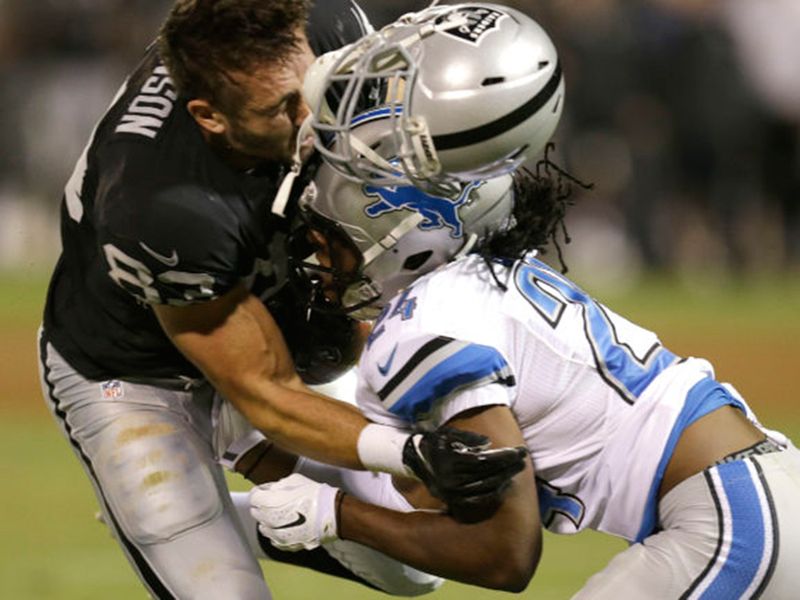
Image Credit: AP
The NFL stood accused of knowing about the long-term effects of repetitive head injuries and not doing enough about it sooner. Other sports however have had to wake up and take notice following the successful NFL lawsuits.
Even before Steve Thompson et al’s claim, rugby has had this well on their agenda. This starts with improved concussion diagnosis and enforced injury layoffs for those with concussion by not allowing a player to re-enter the field of play, or indeed play again until they are fully recovered.
Basic concussion education is something that has become a lot more widespread throughout all sports, but occasionally there are still odd lapses when a player with a head injury is allowed to play on. These incidences usually receive a heightened level of negative press and condemnation, which in itself is a massive improvement on the grin and bear it days of yesteryear.
Beyond that, the NFL has managed to reduce concussions by 29 per cent by changing its rules to stop players from lowering their head in a tackle, to educating coaches on safer tackle techniques — something rugby has also done. They also have spotters in the stand to identify injuries sooner. Changing helmet designs is also an option in the NFL that isn’t there in rugby (because helmets are not worn in rugby.) But this is largely thought to be negligible as a brain can rattle around inside the skull whether a helmet is worn or not.
Therefore, the above methods of early identification and diagnosis, improved layoff times and changes to rules and tackle techniques are effective. No sport is ever going to eradicate the risk of concussion completely but better awareness and education is helping. The hardest part to reconcile is the changing of rules; banning the lowering of heads in an NFL tackle to potentially stopping headers in football, is where each sport might start to lose its identity, but that might be a cost the sport has to pay to avoid an even bigger pay out in the future.
Concussion: cricket’s new menace too?
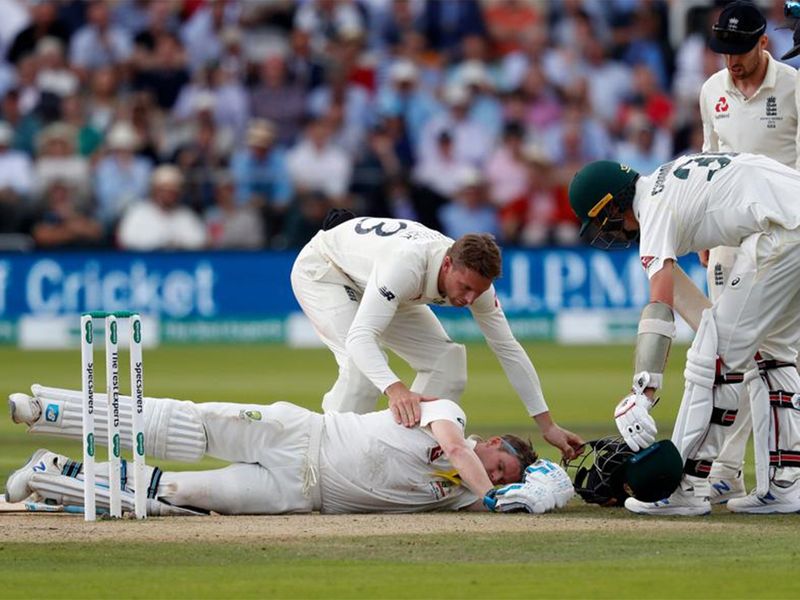
Image Credit: AFP
By Gautam Bhattacharyya
Senior Associate Editor
Kolkata: Concussion — or the use of ‘concussion substitutes’ — had been one of the talking points in cricket in recent times. Strange, isn’t it, for a sport which is not a body-contact one?
The dangers of suffering a concussion injury are far less than NFL, rugby or football, but the red cherry (pink or white if you like) hurled at the batsmen at 145-150 kmph has enough potential to cause damages if there is an error of judgement or split-second delay in moving out of the harm’s way.
The second Ashes Test in 2019 at the Lord’s saw cricket’s first concussion substitute stepping out in the form of Marnus Labuschagne when he replaced Steve Smith, the former Australian skipper who was struck by a Jofra Archer bouncer on the fourth day of the match. Smith, who was quite the rock of the visitors’ batting line-up, lay sprawled on the crease — raising the spectre of Phil Hughes saga — till he was back on his feet and walked off the ground with assistance.
His case was that of a ‘delayed concussion’ — and Cricket Australia decided to replace him by Labuschagne by adhering to the new set of rules implemented by International Cricket Council (ICC) from August 1 last year.
What’s a Concussion Substitute rule?

Image Credit: AFP
The ICC approved the player replacements in all formats of men and women’s international cricket and first-class cricket worldwide after trying it in Australia’s domestic matches since 2016/17 season. It coincided with the launch of the World Test Championship cycle for 2019-21 whereby a team is allowed to replace a ‘like-for-like’ player in case of a head injury deemed as a ‘concussion’ on examination.
The England and Wales Cricket Board (ECB) had adopted the rules in 2018 for its four professional domestic tournaments. After a successful feedback from domestic cricket in Australia and England, the ICC decided to implement the rule in international cricket to safeguard the players from the risk of continuing to be on the field with a potential concussion injury.
No prizes for guessing, the rules were fast-tracked into domestic cricket after the tragic demise of Aussie batsman Phillips Hughes, who at 25 years, lost his life in November, 2014 after being struck on his head in a Sheffield Shield match.
The Phil Hughes tragedy
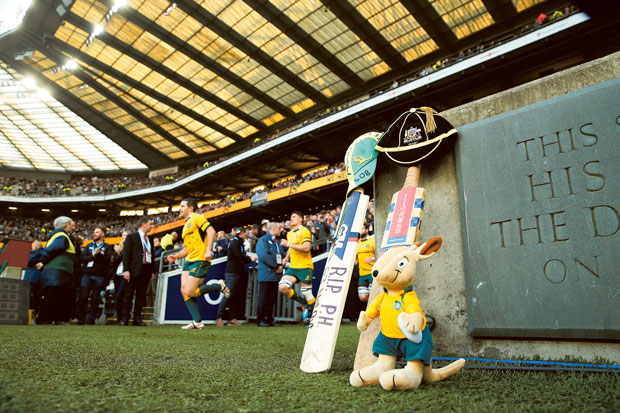
Image Credit: AP
November 25, 2014 will be remembered as a dark day for cricket. Hughes, one of the rising Aussie batting talents, took his eyes off as he looked to pull a bouncer from Sean Abbott and was struck on the back of his neck during a during a Shield game at the Sydney Cricket Ground.
It was a blow from which he never regained consciousness. It had caused a vertebral artery dissection that led to a subarachnoid haemorrhage as he was subjected to induced coma by the team of doctors. Finally, three days before his 26th birthday, Hughes passed away.
Hughes’ death sparked off an inevitable sense of panic in Australian cricket — as well as a debate on the legality of the bouncers. A ‘bouncer’ is very much a legitimate delivery in the arsenal of fast bowlers, one which is pitched short of good length to make it rear up to the batsman — with the intention of intimidating him and inducing him into a false stroke.
In modern cricket, they have been restricted to one per over — a ruling which has severely handicapped the fast bowlers. Even when Hughes was fighting for his life, a personality like Nari Contractor — the former Indian captain who was struck on the head by speed demon Charlie Griffith during a tour of West Indies — felt there was no need to amend the rules.
“You must realise that such an incident has happened after 52 years — it’s an accident,” Contractor told Gulf News during an interview on that occasion.
Batsmen’s technique under scanner
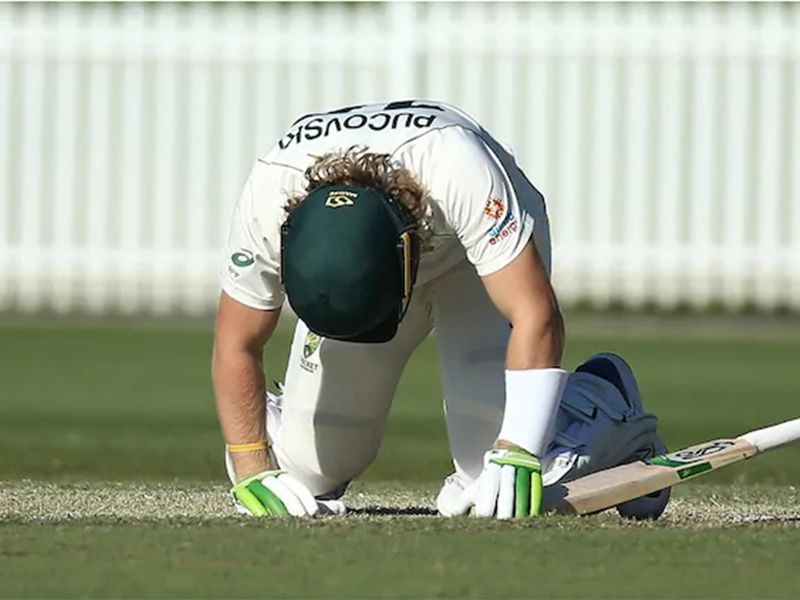
Image Credit: Courtesy Cricket Australia
During the conversation, Contractor had questioned the technique of the modern batsmen in avoiding bouncers or counter-attacking them with backfoot shots — namely the hook and the pull. Unlike the body-contact sporting disciplines, the batsman is at liberty to use his technique here to move out of harm’s way or tackle the express deliveries with his bat.
Surprisingly enough, a prolific batsman like Smith (with the best Test average of 62.8) got struck this year again during the T20 Internationals against England on the eve of IPL. Will Pucovski, the 22-year-old Australian opener, who burst into the scene with a barrage of double centuries and is reckoned as one of their next big thing, recently admitted that a lot of his mental problems stem from getting hit on the helmet so many times.
All these led to batting legends like Sunil Gavaskar and Allan Border recently questioning the technique of the current players behind getting ‘hit’ on the head frequently — making them potential victims of concussion injuries. Gavaskar, the original Little Master, felt that too many batsmen are committing themselves on the frontfoot instead of moving on the backfoot these days and hence cannot transfer their weight on the backfoot.
“See, Virat Kohli plays the bouncer so well because he has that back and across movement, so he is sort of waiting on the backfoot for that short ball. (Rahul) Dravid used to wait on the backfoot, back and across. Sachin Tendulkar had the minimal front press, therefore he was still balanced when he played the short ball.
“I think it is just a little technical thing which is why a lot of these people are getting hit on the helmet. You see most of the times people getting hit on the helmet are in between the crease. You very seldom see anybody on the backfoot,” said the first batsman to score 10,000 Test runs.
Border, the gutsy former Australian captain, said about Pucovski: ‘’Have you ever known anyone to make four big double hundreds in his first 20 games? This kid (Pucovski), we don’t know what we have got here. But unfortunately he has got that problems with getting hit on the helmet and getting concussed and he has got that predisposition. “Of course, when he bats, he is going to face a lot of short-pitched deliveries,” said a in-your-face Border.
Ashley Hammond is a former Chief Reporter and Editor at Gulf News


